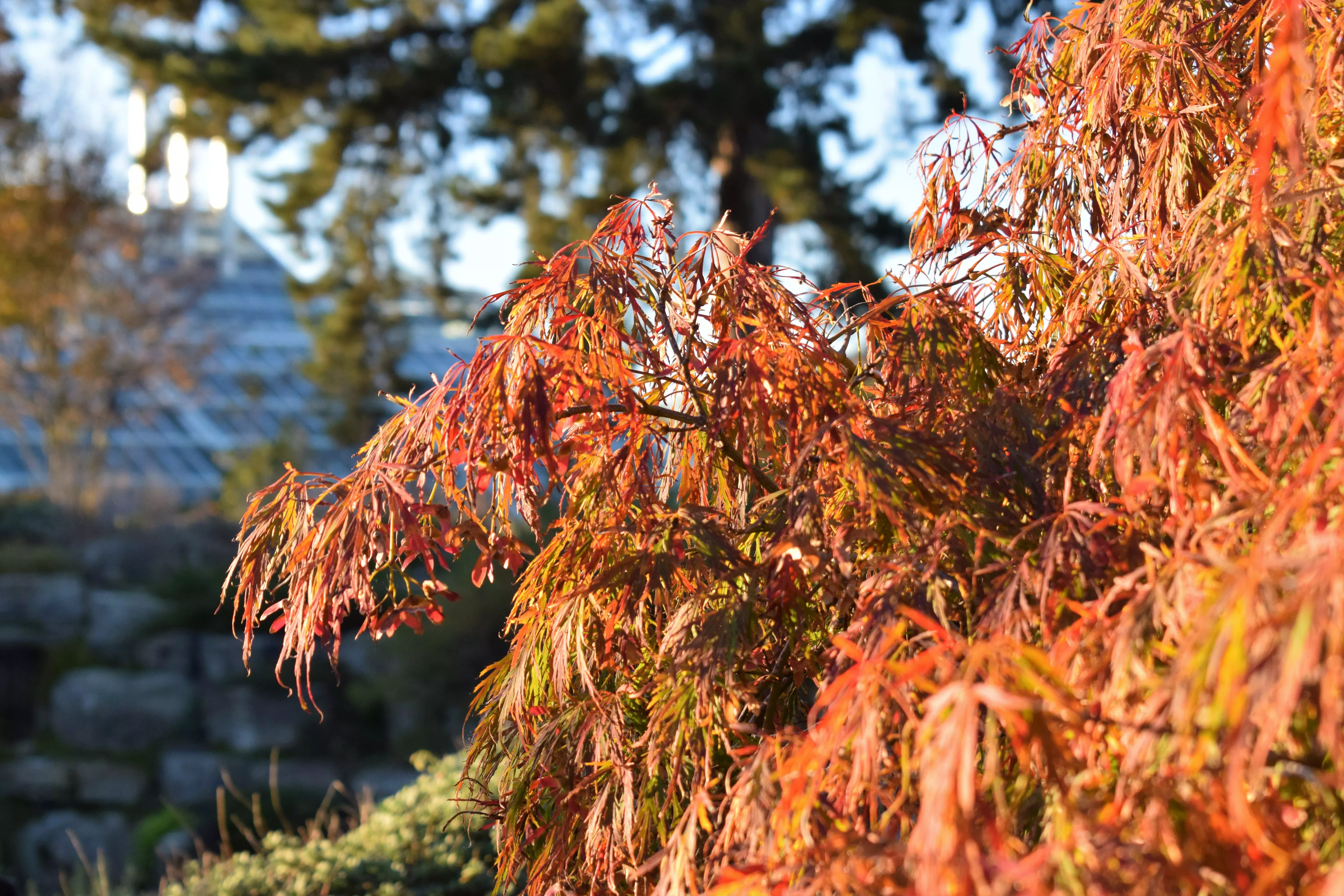27 October 2017
Meet Kew's autumn trees
Autumn is one of the best times to take a long walk in the Gardens, as many of the hundreds of tree species are at their most colourful.

Find your favourite tree
With around 14,000 trees spread throughout the Gardens, it couldn’t be easier to find a favourite tree to sit under.
There are hundreds of different species, cultivars and hybrids gathered together at Kew, many planted in family groups, others placed as specimen trees.
Some of the oldest and most characterful date from when Kew was first conceived as a botanic garden in the mid-18th century. With such a rich abundance of species, Kew is surely one of the best places in the country to get better acquainted with trees.
Learning to recognise different tree species is easy and rewarding, bringing added interest to your future walks, whether in towns, parks or in the countryside.
You don’t have to go far from Victoria Plaza to come across some stunning tree specimens, so be sure to take your time and look around as you walk from the gate. On the Plaza itself you can see an unusual oak with elongated leaves, which you would never think belonged to an oak tree. Known as the sawtooth oak in America and the cloud oak in Japan, Quercus acutissima has a beautiful billowing shape. You can compare it to the English oak (Q. robur) across the path and wonder at the diversity of the 600-or-so species in this genus.
Oaks are well represented at Kew, with over 2,700 specimens of 112 species, and many offer a fine display of autumn colour and acorns. Kew’s sawtooth oak has acorns that sit in frilly cups and are worth seeking out. You can also head to the oak collection near Brentford Gate and along Riverside Walk to explore their variety, and enjoy the crimson colours of the red oak, Q. rubra. Also look out for the beautiful russet-leaved pin oaks (Q. palustris) near the Xstrata Treetop Walkway.
An impressive tree you shouldn't miss is the huge chestnut-leaved oak (Quercus castaneifolia) near the Waterlily House. This is one of Kew's champion trees (the largest of its kind in the country) and the largest tree, by volume, in the Gardens. Its common name says it all, as once again this oak doesn’t have the typical oak leaf we’re familiar with. You can compare it with the true sweet chestnut leaf if you head towards the Mediterranean Garden, where you’ll find one of Kew’s oldest trees.

The sweet chestnut (Castanea sativa) that sits at the entrance to the Mediterranean garden is thought to date from the early 1700s when the land was part of the original royal estates.
Sweet chestnuts put on a beautiful display of golden foliage in autumn, and cover the ground with their shiny brown nuts in spiky casings. You can see several old specimens near here, with their twisting, ridged bark, which is indicative of great age.
But if it’s more exotic autumn colour you’re after, then head down to the maple collection near the Shirley Sherwood Gallery of Botanical Art. Varying in size, colour and shape according to species, these trees offer a really breathtaking autumn spectacle. At a glance, the leaves resemble those of plane trees, but these sprout from the stem in opposite pairs, while plane leaves sprout singly on alternating sides along the stem.
A little further down towards Lion Gate and beyond the Japanese Gateway you’ll find several fine hickory trees (Carya). These are well worth photographing, especially when the sun catches their vibrant leaves, which are composed of five large leaflets. In mature specimens of C. ovata, the bark peels off in strips, earning the tree its common name of shagbark hickory.
After the autumn colour has faded, there are some stunning conifers to get to know too. Not only are there many cedars across the Gardens, including the deodar (Cedrus deodara) and Atlas cedars (C. atlantica) near the Broad Walk, with their distinctive rosettes of needles, but you have the whole of the Pinetum to explore, including the Redwood Grove.
Around the Palm House Pond you’ll find several specimens of swamp cypress (Taxodium distichum) – one of the few deciduous conifers – whose delicate leaves are now turning beautiful shades of copper and gold, making fine reflections in the water. Get up close and you’ll see one of the defining features of this tree – its knobbly ‘knees’, which poke up through the waterlogged soil along the bank. There are many other stately trees near the Pond, including a huge London plane (Platanus x hispanica) and a pair of tulip trees (Liriodendron tulipifera), which have grown into perfect specimens of their kind. Each has a distinctive leaf – hand-shaped on the plane and almost square on the tulip tree. The foliage of both turns a beautiful yellow in autumn. As well as its characteristic flaking bark, the plane has round clusters of seeds that hang like baubles from the branches and are easy to spot from a distance.
You’ll also find several stunning sweet gums (Liquidambar styraciflua) along the Broad Walk, which put on one of the Gardens’ best autumn displays. Their very pointed, maple-like leaves turn a kaleidoscope of yellows, reds and deep burgundy as autumn progresses.
Taken from an article in Kew Magazine.
Kew Magazine
Kew Magazine has won several prestigious awards for both its writing and photography. It is free for Kew Members or can be subscribed to through our online shop.
The digital version also gives access to over 30 back issues and is word searchable for articles (and is only £19.99 for a year).